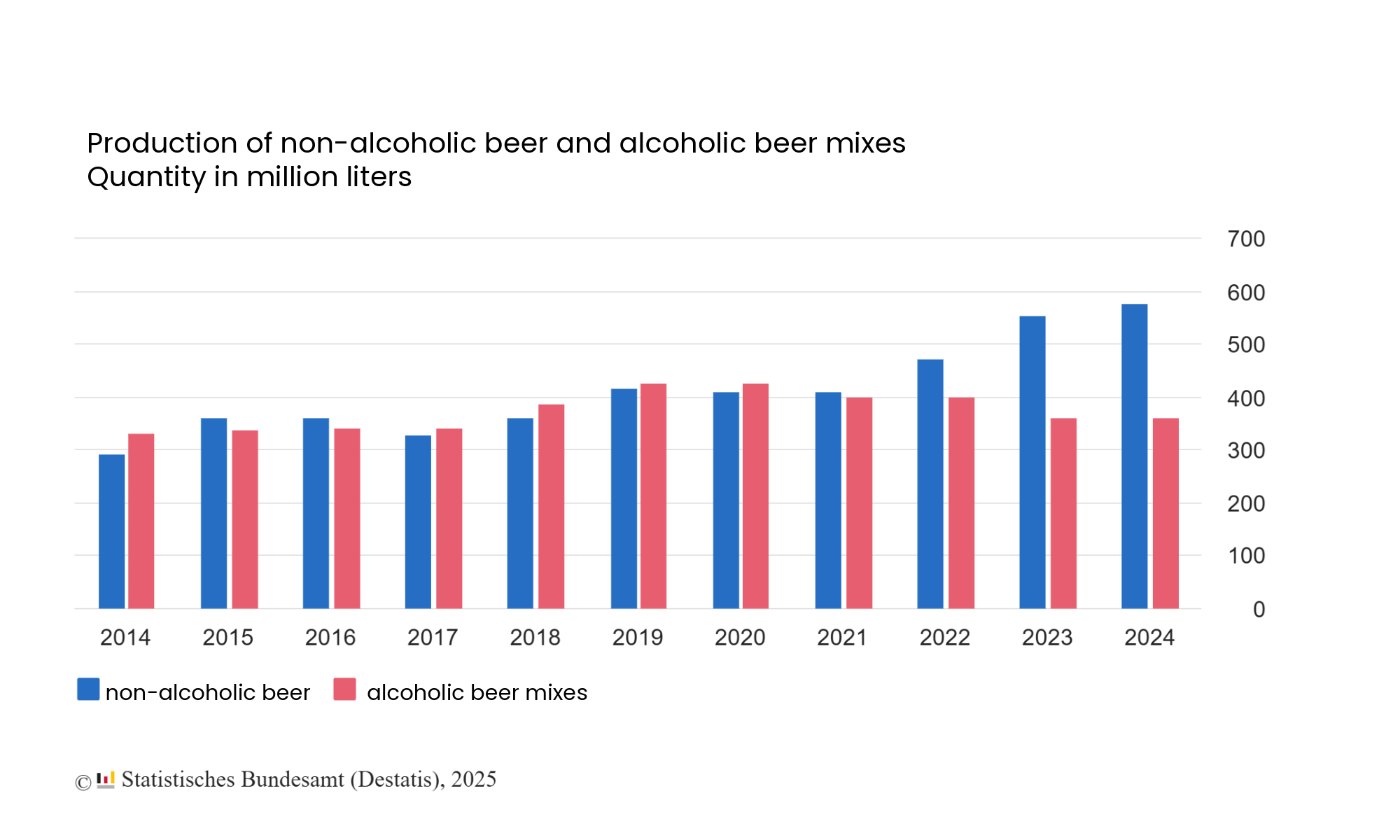
Germany is witnessing a significant shift in its beer consumption patterns as the popularity of non-alcoholic beer soars. In 2024, almost 579 million liters of non-alcoholic beer were produced in the country, valued at approximately €606 million. This marks an impressive 96.1% increase compared to 2014 when production was just over 295 million liters. The Federal Statistical Office (Destatis) in Wiesbaden announced this data on International Beer Day, August 1, highlighting the growing demand for alcohol-free beer options.
Despite the rising popularity of non-alcoholic beer, Germany remains a global heavyweight in traditional alcoholic beer production. In 2024, breweries produced around 7.2 billion liters of alcoholic beer, worth approximately €6.6 billion. However, this figure reflects a 14.0% decline in alcoholic beer production compared to a decade ago, when it stood at 8.4 billion liters. The contrast between these two trends underscores a broader transformation in consumer preferences, as more people opt for healthier, low-alcohol, or alcohol-free alternatives.
The ratio of alcoholic beer to non-alcoholic beer production has also shifted dramatically over the past ten years. Back in 2014, for every liter of non-alcoholic beer produced, there were roughly 28 liters of alcoholic beer. By 2024, this ratio had decreased to about 12 liters, illustrating the steady rise of the non-alcoholic beer market in Germany.

In addition to the surge in non-alcoholic beer, production of beer mixed drinks such as shandy, which contain a lower alcohol content than regular beer, has also increased, though at a more modest rate. Production volumes for these mixed beverages rose from just under 333 million liters in 2014 to around 364 million liters in 2024, representing a 9.3% increase over the decade. Unlike non-alcoholic beer, however, these drinks are not completely alcohol-free but appeal to consumers looking for lighter alternatives.
The growth in non-alcoholic beer production aligns with global health trends, where consumers are increasingly mindful of alcohol intake and seeking beverage options that support a balanced lifestyle. This shift also reflects changes in social attitudes, as non-alcoholic beers become more widely accepted and even celebrated as a sophisticated choice rather than a compromise.
Germany’s beer industry is clearly adapting to these evolving tastes. While traditional beer remains dominant in terms of volume and value, the rapid growth of non-alcoholic beer production signals a vibrant and expanding market segment. Brewers across the country are innovating to meet this demand, offering a broader range of high-quality, flavorful non-alcoholic beers that appeal to diverse consumer preferences.
As the market continues to evolve, the rise of non-alcoholic beer in Germany highlights the dynamic nature of the beverage industry and underscores the importance of catering to changing consumer lifestyles and values. This trend is expected to continue in the coming years, further reshaping Germany’s iconic beer landscape.